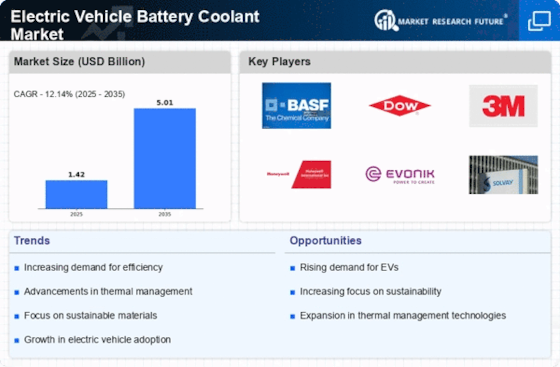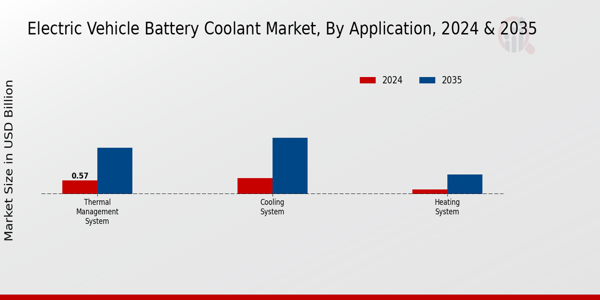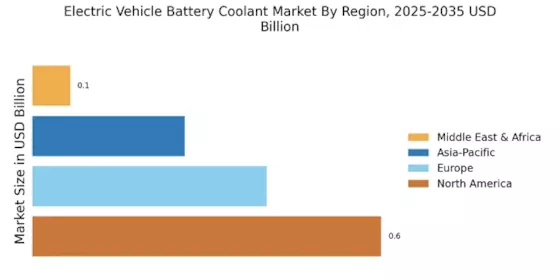Electric Vehicle Battery Coolant Market Summary
As per MRFR analysis, the Electric Vehicle Battery Coolant Market Size was estimated at 1.42 USD Billion in 2024. The Electric Vehicle Battery Coolant industry is projected to grow from 1.592 USD Billion in 2025 to 5.008 USD Billion by 2035, exhibiting a compound annual growth rate (CAGR) of 12.14 during the forecast period 2025 - 2035.
Key Market Trends & Highlights
The Electric Vehicle Battery Coolant Market is poised for substantial growth driven by sustainability and technological advancements.
- The market is witnessing a pronounced shift towards sustainability, influencing product development and consumer preferences.
- North America remains the largest market, while Asia-Pacific is emerging as the fastest-growing region for electric vehicle battery coolants.
- The Thermal Management System segment dominates the market, whereas the Cooling System segment is experiencing rapid growth.
- Rising demand for electric vehicles and technological innovations in battery cooling solutions are key drivers propelling market expansion.
Market Size & Forecast
| 2024 Market Size | 1.42 (USD Billion) |
| 2035 Market Size | 5.008 (USD Billion) |
| CAGR (2025 - 2035) | 12.14% |
Major Players
BASF SE (DE), Dow Inc. (US), 3M Company (US), Honeywell International Inc. (US), Evonik Industries AG (DE), Solvay SA (BE), LG Chem Ltd. (KR), Afton Chemical Corporation (US), ExxonMobil Chemical Company (US)



















Leave a Comment